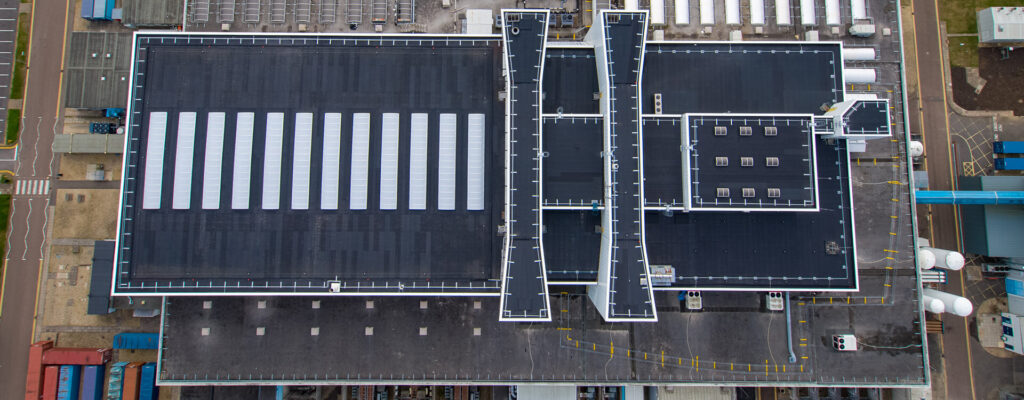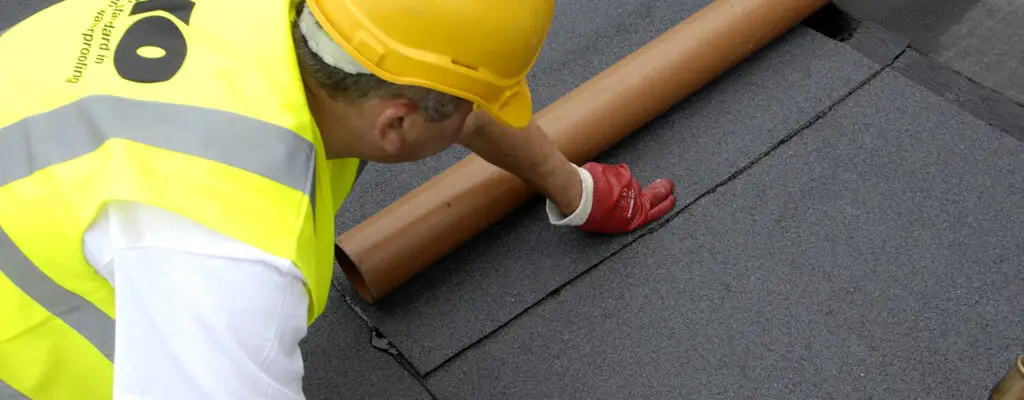Dependent on the products and materials used, a flat roof’s waterproofing should last between 20 and 40 years. Good maintenance will also contribute to its performance and longevity. But which proactive steps need to be taken when a waterproofing system reaches the end of its serviceable life?
Roofing purpose
When deciding on a waterproofing system for a flat roof application, it’s important to consider what it’s meant to do. An appropriately-designed and correctly-installed solution will prevent a prevalence of standing water, which in-turn will protect the structural integrity of the building itself.
Water carries immense weight and when left to pond, it could lead to the breakdown of the roof’s coating which will leave the roof susceptible to the UV degradation. As an example of the immense strain it can bring to bear, 1mm of water per m2 equates to 1kg.
Therefore, that same level of water across a 5mm x 30m2 surface would be akin to two adults standing on a roof. Long-standing water can also promote vegetation growth in the form of plants and fungi; wildlife that can penetrate a flat roof’s surface and cause untold damage to the building itself.
As well as keeping a roof dry, a good waterproofing system should ensure it achieves regulatory levels of thermal performance. In poorly insulated homes, roofs account for 25% of a building’s heat loss.
It is crucial, therefore, that the insulation supplied as part of a build-up offers an effective barrier to energy escape whilst being of suitable thickness to prevent the obstruction of door and window thresholds. Its design should also take into account roofs with plant installations, walkways, and safety features such as guardrails and hatch systems.
Monitor to prevent major repairs
Good management can be achieved by gaining an understanding of your roof stock. Is it old or is it new? Are there other plans for the building that could impact the roof? New windows may provide less ventilation than old ones? Will an extension be required, and will it impact the current roof?
Prevention is better than cure, a saying that is particularly pertinent to roofing management. Neglecting to act upon tell-tale signs of a roof’s degradation can transform a seemingly minor maintenance issue into a major repair project that potentially comes at great expense to a property owner in order to keep it weathertight and its occupants safe.
This worst-case scenario can be avoided by keeping a periodical look-out for signs of natural wear and tear which indicate a roof’s performance is in danger of being compromised.
These visual sirens might include elements such as lap joints becoming loose or in the case of an asphalt roof, the appearance of surface lumps and creases, or even blocked outlets.
Getting the balance right
In terms of appropriate waterproof specification for flat roofs, property owners must strike a balance between the ‘nice’ to have, with the ‘need’ to have. To ensure this thin line is more easily navigated, it’s important to decide upon a level of spending by drawing up a budget. This should take into account future plans for the roof asset and the building itself.
Engage with the experts
The aforementioned issues can be overcome by engaging with roofing, waterproofing and insulation experts such as IKO Group. Our industry expertise is available to facilitate an appropriate solution for a wide range of flat and tapered roof applications.
In terms of performance and cost, we have the all-round knowledge to direct clients towards the most appropriate waterproofing solution.
We understand that although hardly out of sight; roofs are out of mind for most people – it’s just not something they choose to think about.
However, this shouldn’t detract from their everyday importance, and at IKO we’ve got the whole of issue of roofing design and performance covered. Early engagement will always result in a more favourable outcome.
March webinar
The next in a series of monthly webinars hosted by IKO focuses on Roofing Stock Management. It offers further insight into issues highlighted within this blog such as flat roof failure prevention, roofing maintenance, surveys, post-installation aftercare and value engineering.
It also looks at British standards guidance in relation to waterproofing health and safety practices including working at height.


